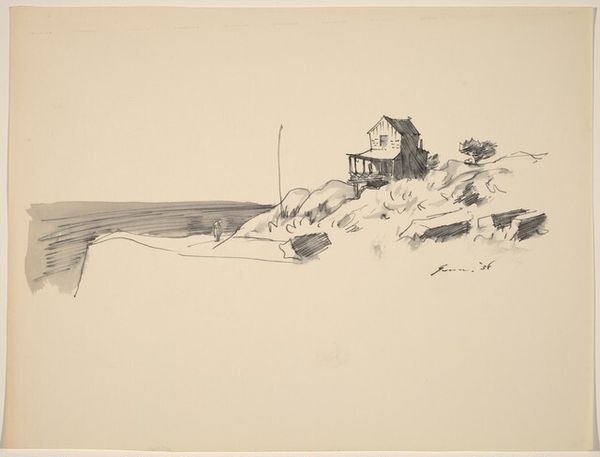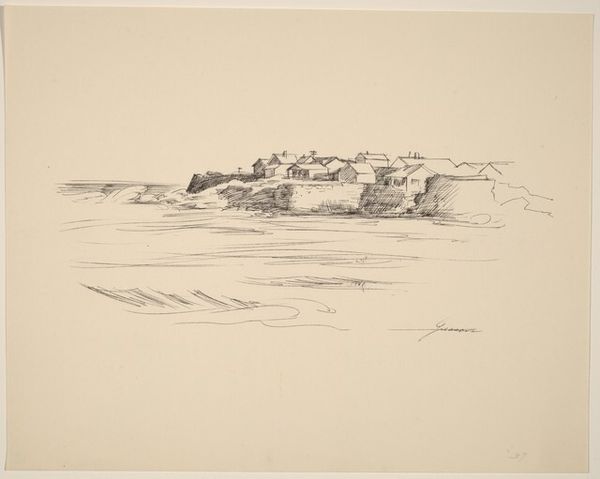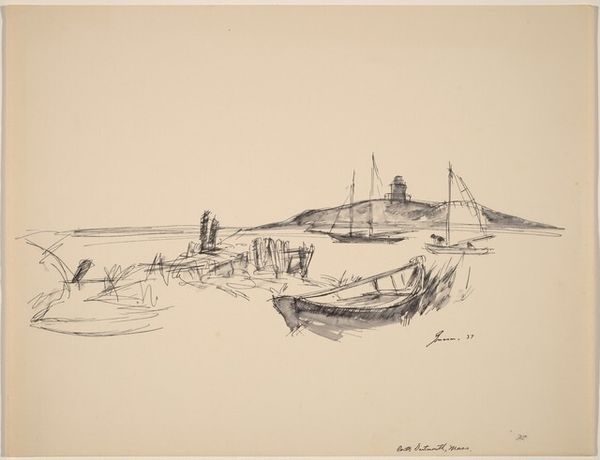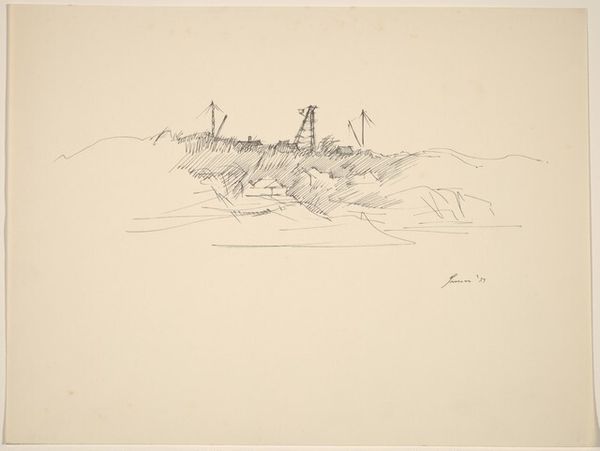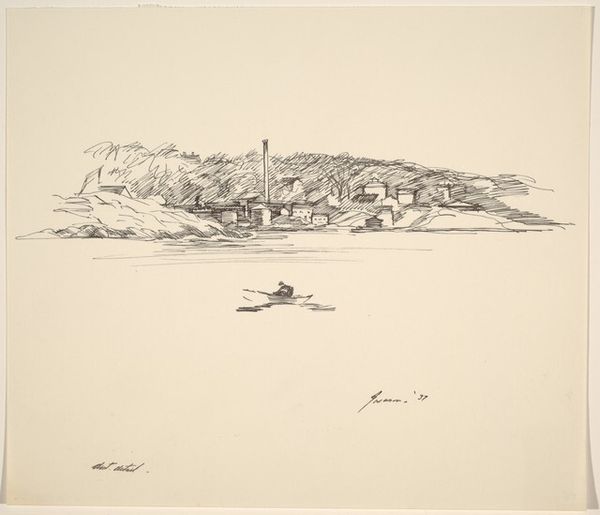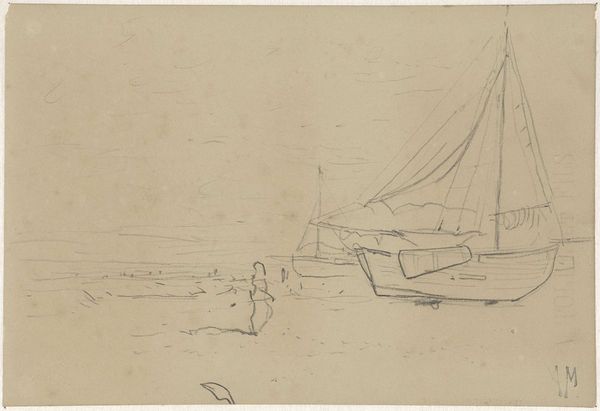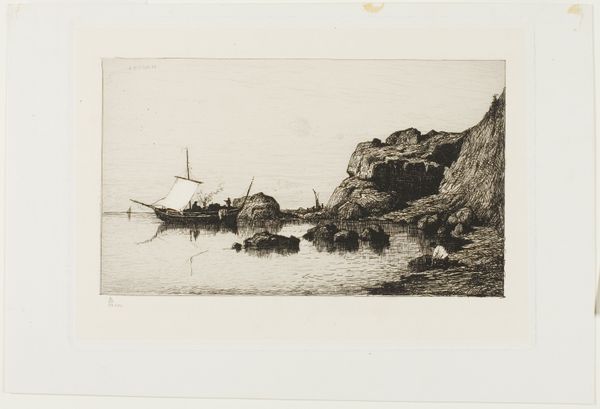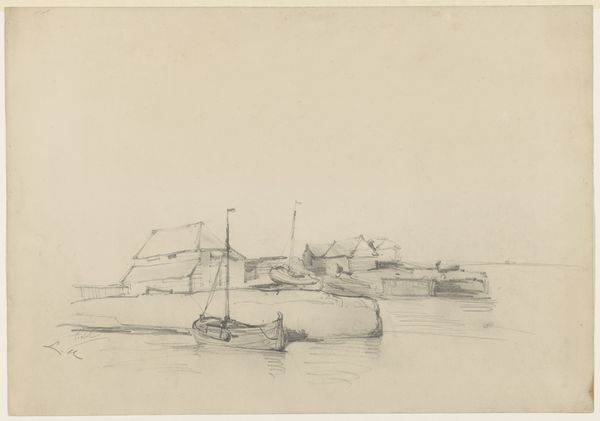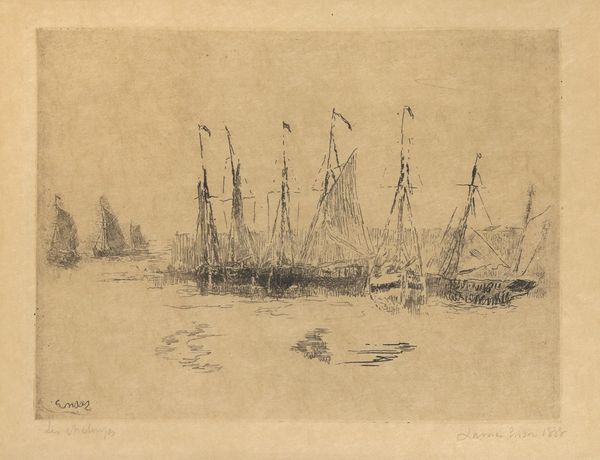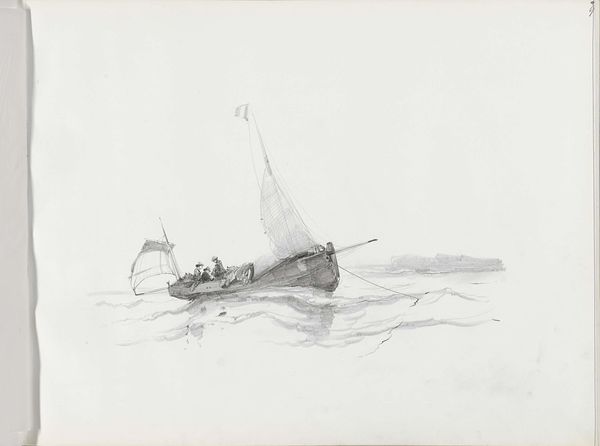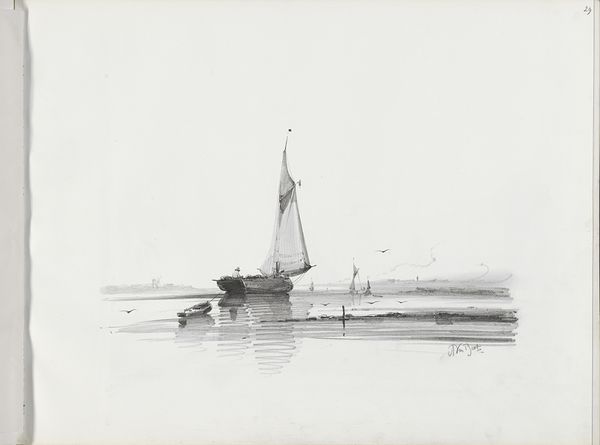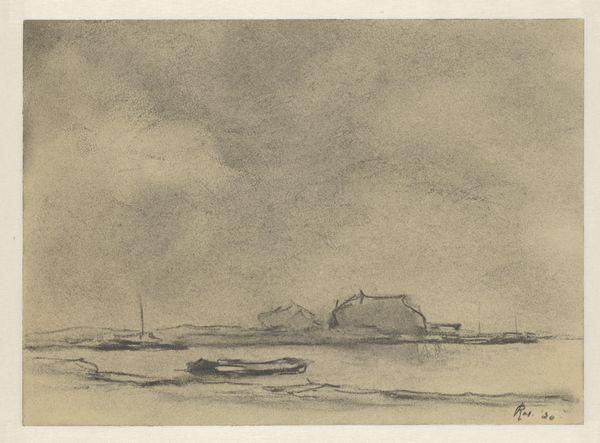
drawing
#
landscape illustration sketch
#
drawing
#
amateur sketch
#
ink drawing
#
pen sketch
#
pencil sketch
#
incomplete sketchy
#
etching
#
ink drawing experimentation
#
pen-ink sketch
#
sketchbook drawing
Dimensions: overall: 18.6 x 17.7 cm (7 5/16 x 6 15/16 in.)
Copyright: National Gallery of Art: CC0 1.0
Editor: This is Donald Carlisle Greason’s "Anchored Sailboats," created in 1937 using what appears to be ink on paper. The loose strokes give it such a sense of immediacy and it makes me think about observational drawings or field sketches, a study made on location, though it doesn't feel "finished" to me. What is your reading of this work, focusing on its formal qualities? Curator: Initially, one notices the division of space and the tonal contrasts at play. The composition presents a deliberate separation of foreground and background through line and value. Observe how the artist has articulated forms primarily through outlines, sparsely supplemented by tonal washes to delineate shadow and volume. This deliberate restraint is key to unlocking the image's structural syntax. Editor: Can you say more about how line and value construct the image? Curator: Note how the confident lines construct the forms of sailboats in the middle-ground. The lines define and abstract, rendering the objects as symbolic representations rather than photorealistic portrayals. This echoes early Modernist experiments with abstraction. The foreground's logs serve as compositional anchors, their placement disrupting a conventional landscape perspective, and how these linear representations become more of flat, shaded form? The blank space surrounding these subjects contributes to a visual hierarchy emphasizing objecthood over illusionistic depth. Editor: So, even the emptiness becomes a compositional element? I hadn’t considered that. Curator: Precisely. It invites consideration of how absence shapes perception. By studying the relationship between object, line, and space, we unravel the deeper semiotic framework intended by the artist. How the medium itself— ink—serves as the genesis for expression. Editor: I’m beginning to appreciate how much information is contained within what I first considered a very simple drawing! Thanks! Curator: Indeed! A continued dedication to scrutinizing structure often uncovers layers obscured in cursory viewing.
Comments
No comments
Be the first to comment and join the conversation on the ultimate creative platform.
